 W
WBetween October 1940 and February 1942, in spite of the ongoing German attack on the Soviet Union in June 1941, the Red Army, in particular the Soviet Air Force, as well as Soviet military-related industries were subjected to purges by Stalin.
 W
WThe Butovo Firing Range or Butovo Shooting Range was an execution site of the Soviet secret police located near Drozhzhino in Leninsky District, Moscow Oblast from 1938 to 1953.
 W
WThe Bykivnia graves is a National Historic Memorial on the site of the former village of Bykivnia on the outskirts of Kyiv. During the Stalinist period in the Soviet Union, it was one of the unmarked mass grave sites where the NKVD, the Soviet secret police, disposed of thousands of executed "enemies of the Soviet state".
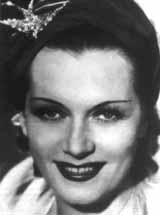 W
WOlga Konstantinovna Chekhova, in Germany Olga Tschechowa was a Russian-German actress. Her film roles include the female lead in Alfred Hitchcock's Mary (1931).
 W
WDalstroy, also known as Far North Construction Trust, was an organization set up in 1931 in order to manage road construction and the mining of gold in the Russian Far East, including the Magadan Region, Chukotka, parts of Yakutia and parts of present-day Kamchatka Krai.
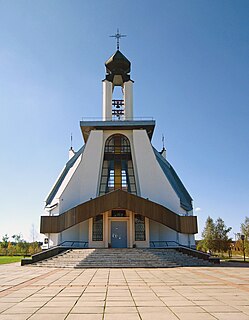 W
WDem'ianiv Laz is a mass burial site of victims of the Soviet extrajudicial killings committed following the Soviet invasion of Poland near Stanisławów. At least 524 captives were shot by the NKVD and buried in several mass graves dug by the prisoners themselves in a small gorge outside of the city.
 W
WSergei Yakovlevich Efron was a Russian poet, officer of White Army and husband of Marina Tsvetaeva. While in emigration, he was recruited by the Soviet NKVD. After returning to USSR from France, he was executed.
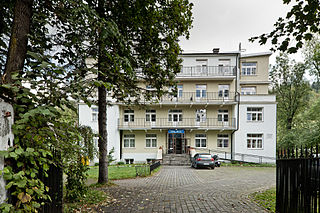 W
WThe Gestapo–NKVD conferences were a series of security police meetings organised in late 1939 and early 1940 by Germany and the Soviet Union, following the invasion of Poland in accordance with the Molotov-Ribbentrop Pact. The meetings enabled both parties to pursue specific goals and aims as outlined independently by Hitler and Stalin, with regard to the acquired, formerly Polish territories. The conferences were held by the Gestapo and the NKVD officials in several Polish cities. In spite of their differences on other issues, both Heinrich Himmler and Lavrentiy Beria had similar objectives as far as the fate of the prewar Poland was concerned.
 W
WThe Great Purge or the Great Terror, also known as the Year of '37 and the Yezhovschina, was a campaign of political repression in the Soviet Union that occurred from 1936 to 1938. It involved a large-scale repression of wealthy peasants (kulaks); genocidal acts against ethnic minorities; a purge of the Communist Party, government officials, and the Red Army leadership; widespread police surveillance; suspicion of saboteurs; counter-revolutionaries; imprisonment; and arbitrary executions. Historians estimate the total number of deaths due to Stalinist repression in 1937–38 to be between 680,000 and 1,200,000.
 W
WThe Gulag or GULAG was the government agency in charge of the Soviet network of forced labour camps set up by order of Vladimir Lenin, reaching its peak during Joseph Stalin's rule from the 1930s to the early 1950s. English-language speakers also use the word gulag to refer to all forced-labor camps that existed in the Soviet Union, including camps that existed in the post-Lenin era.
 W
WThe Internal Troops, full name Internal Troops of the Ministry for Internal Affairs (MVD), alternatively translated as "Interior ", is a paramilitary gendarmerie-like force mostly in succession states of the Soviet Union and in other countries as well, including in Russia, Ukraine, Georgia, Kazakhstan, Kyrgyzstan, Azerbaijan, Belarus, Turkmenistan, Tajikistan and Uzbekistan. It is also maintained as reserve forces in the Armed Forces of Mongolia. Internal Troops are subordinated to the interior ministries of the respective countries.
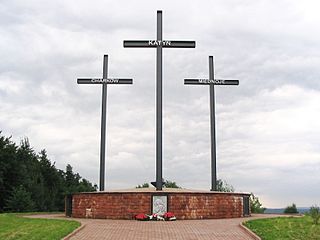 W
WThe Katyn massacre was a series of mass executions of nearly 22,000 Polish military officers and intelligentsia carried out by the Soviet Union, specifically the NKVD in April and May 1940. Though the killings also occurred in the Kalinin and Kharkiv prisons and elsewhere, the massacre is named after the Katyn Forest, where some of the mass graves were first discovered.
 W
WKommunarka shooting ground was an execution site of the NKVD located near Kommunarka, Moscow Oblast from 1937 to 1941.
 W
WKurapaty is a wooded area on the outskirts of Minsk, Belarus, in which a vast number of people were executed between 1937 and 1941 during the Great Purge by the Soviet secret police, the NKVD.
 W
WThe so-called Latvian Operation of the NKVD was a mass arrest, execution and deportations of persons of Latvian origin in the Soviet Union by the People's Commissariat for Internal Affairs during the period of Great Purge (1937–1938).
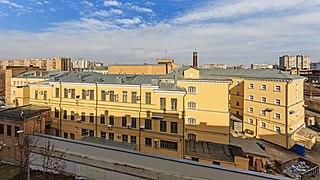 W
WLefortovo Prison is a prison in Moscow, Russia, which, since 2005, has been under the jurisdiction of the Ministry of Justice of the Russian Federation. It was built in 1881 and located in the Lefortovo District of Moscow, which it took its name from Franz Lefort, a close associate of Tsar Peter I the Great.
 W
WLitene is the center of Litene Parish, in Gulbene Municipality, in north-eastern Latvia. Other names: Lytene, Myza Lytene. A notable building is Litene Manor.
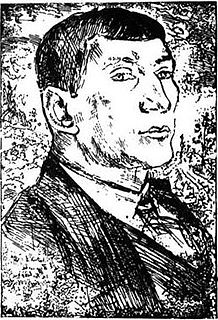 W
WBenedikt Konstantinovich Livshits was a poet and writer of the Silver Age of Russian Poetry, a French–Russian poetry translator.
 W
WEustacia María Caridad del Río Hernándeza, better known as Caridad del Río, Caridad Mercader or Caritat Mercader, was a Spanish communist militant and an agent of the Soviet NKVD. She is also known for being the mother of Ramón Mercader, the assassin of Leon Trotsky, and for having personally participated in the operation.
 W
WMilitary counterintelligence of the Armed Forces of the Union of Soviet Socialist Republics was controlled by the nonmilitary Soviet secret police throughout the history of the USSR.
 W
WNikolai Aleksandrovich Nevsky was a Russian and Soviet linguist, an expert on a number of East Asian languages. He was one of the founders of the modern study of the Tangut language of the mediaeval Xi Xia Empire, the work for which he was awarded the degree of Doctor of Science in Philology during his life, and Lenin Prize posthumously. He spent most of his research career in Japan before returning to the USSR. He was arrested and executed during the Great Purge; his surviving manuscripts were published much later, starting in 1960.
 W
WThe title of New Martyr or Neomartyr is conferred in some denominations of Christianity to distinguish more recent martyrs and confessors from the old martyrs of the persecution in the Roman Empire. Originally and typically, it refers to victims of Islamic persecution.
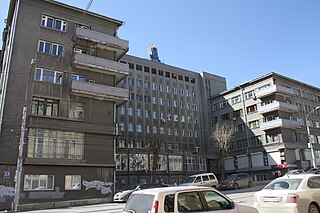 W
WNKVD House is a constructivist building in Tsentralny City District of Novosibirsk, Russia. It was built in 1936. Architects: Sergey Turgenev, Ivan Voronov, Boris Gordeyev.
 W
WNKVD Order № 00447 of July 30, 1937 O repressirovanii byvshikh kulakov, ugolovnikov i drugikh antisovyetskikh elementov was signed by Nikolai Yezhov and approved by Politburo during the Great Purge.
 W
WThe Soviet NKVD Order № 00485 was an anti-Polish ethnic cleansing campaign issued on August 11, 1937 which laid the foundation for the systematic elimination of the Polish minority in the Soviet Union between 1937 and 1938. The order was called "On the liquidation of Polish sabotage and espionage groups and units of the POW". It is dated August 9, 1937, was issued by the Central Committee Politburo, and signed by Nikolai Yezhov, the People's Commissar for Internal Affairs. The operation was at the center of the national operations of the NKVD, and the largest ethnically-motivated shooting action of the Great Terror.
 W
WThe NKVD Special Camp No. 1 was a special camp operated by the NKVD from 1945-1948, during the Soviet occupation of parts of Germany. It was located 4 km to the east of Mühlberg, Brandenburg using the shacks of the former German run prisoners-of-war camp Stalag IV-B. The prisoners mainly consisted of members of the lower and medium ranks of the nazi party, German military personnel, youth wrongly accused of belonging to the Werwolf and other persons who were regarded by the Soviets as being potentially dangerous like journalists, teachers, policemen, farmers, factory owners and politicians in addition to a number of arbitrarily accused people. Conditions in the camp were characterized by bad sanitary conditions, malnutrition and lack of basic medical service. The camp had over 21,800 prisoners during its existence, including 1,490 women and over 1,300 teenagers. At most, it held 12,000 prisoners at a time. In 1946, around 3,000 prisoners were deported to the Gulag in the Soviet Union. On 8 February 1947, a further 1,000 prisoners, mostly youth, were also deported to an NKVD Gulag camp in Siberia, the NKVD Camp No. 7503/11 in Anschero-Sudschensk. In summer 1948, two thirds of the prisoners were released. On 17 September 1948, the remaining 3,000 prisoners were transferred to another NKVD camp, Special Camp No. 2 in Buchenwald. From there, a part was released in 1950, the remaining prisoners were handed over from the Soviets to the East German Communist government and brought to Waldheim on 9 and 13 February 1950, only to be "convicted" in the infamous Waldheim Processes. The camp in Mühlberg ceased operations in 1948.
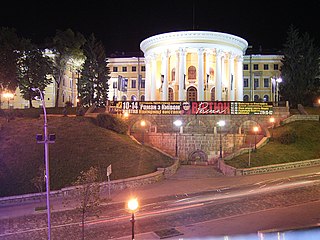 W
WThe October Palace is a performing arts center in Kyiv, Ukraine. It is officially known as the International Center of Culture and Arts of the Trade Union Federation of Ukraine, while October Palace is used for its brevity.
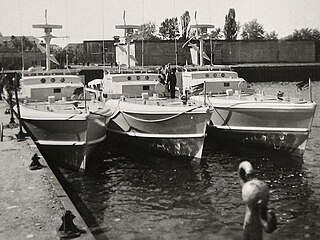 W
WOperation Jungle was a program by the British Secret Intelligence Service (MI6) early in the Cold War from 1948 to 1955 for the clandestine insertion of intelligence and resistance agents into Poland and the Baltic states. The agents were mostly Polish, Estonian, Latvian and Lithuanian exiles who had been trained in the United Kingdom and Sweden and were to link up with the anti-Soviet resistance against the communist governments. The naval operations of the program were carried out by German crew-members of the German Mine Sweeping Administration under the control of the Royal Navy. The American-sponsored Gehlen Organization also got involved in the draft of agents from Eastern Europe. However, the KGB penetrated the network and captured or turned most of the agents.
 W
WGrigory Ivanovich Petrovsky was a Ukrainian Soviet politician and Old Bolshevik. He participated in signing the Treaty on the Creation of the USSR and the Treaty of Brest-Litovsk. Petrovsky was one of the officials responsible for implementing Stalin's policies such as collectivization.
 W
WPiatykhatky is a neighborhood of Kharkiv, Ukraine, former khutir. The neighborhood is part of the Kyivskyi District of Kharkiv city.
 W
WThe Polish Operation of the NKVD in 1937–1938 was an anti-Polish mass ethnic cleansing operation of the NKVD carried out in the Soviet Union against Poles during the period of the Great Purge. It was ordered by the Politburo of the Communist Party against the so-called "Polish spies" and customarily interpreted by the NKVD officials as relating to 'absolutely all Poles'. It resulted in the sentencing of 139,835 people, and summary executions of 111,091 Poles living in or near the Soviet Union. The operation was implemented according to NKVD Order No. 00485 signed by Nikolai Yezhov. The majority of the shooting victims were ethnically Polish, but not all these groups in the Soviet worldview had some element of Polish culture or heritage, and were therefore also "Polish". The remainder were 'suspected' of being Polish, without further inquiry, or classed as possibly having pro-Polish sympathies. In order to speed up the process, the NKVD personnel reviewed local telephone books and arrested persons with Polish-sounding names.
 W
WThe NKVD prisoner massacres were a series of mass executions of political prisoners carried out by the NKVD, the People's Commissariat for Internal Affairs of the Soviet Union, across Eastern Europe, primarily Poland, Ukraine, the Baltic states, and Bessarabia. After the start of the German invasion of the Soviet Union on June 22, 1941, the NKVD troops were supposed to evacuate political prisoners into the interior of the Soviet Union, but the hasty retreat of the Red Army, the lack of transportation and other supplies and the general disregard for legal procedures often meant that the prisoners were executed.
 W
WMikhail Ivanovich Rodionov was a Soviet-Russian statesman who was from 1946 to 1949 the Chairman of the Council of Ministers of the Russian SFSR, literally meaning Premier or Prime Minister. He was executed in the aftermath of the Leningrad Affair.
 W
WJulius and Ethel Rosenberg were American citizens who were convicted of spying on behalf of the Soviet Union. The couple was accused of providing top-secret information about radar, sonar, jet propulsion engines, and valuable nuclear weapon designs; at that time the United States was the only country in the world with nuclear weapons. Convicted of espionage in 1951, they were executed by the federal government of the United States in 1953 in the Sing Sing correctional facility in Ossining, New York, becoming the first American civilians to be executed for such charges and the first to suffer that penalty during peacetime.
 W
WSandarmokh is a forest massif 12 kilometres (7.5 mi) from Medvezhyegorsk in the Republic of Karelia where thousands of victims of Stalin's Great Terror were executed. Over 9,000 people of more than 58 nationalities were shot and buried there in 236 communal pits over a 14-month period in 1937 and 1938.
 W
WSerpantinka is the informal name for the place of detention and execution at the times of Stalinism, located in the Kolyma region. It was under control of Sevvostlag, and the local NKVD troika used it as the second major place for the enforcement of their death sentences during the Great Terror. The few survivors recall "Serpantinka" as one of the most brutal sites, even among Stalin's camps in the Kolyma area.
 W
WSMERSH was an umbrella organization for three independent counter-intelligence agencies in the Red Army formed in late 1942 or even earlier, but officially announced only on 14 April 1943. The name SMERSH was coined by Joseph Stalin. The main reason for its creation was to subvert the attempts by German forces to infiltrate the Red Army on the Eastern Front.
 W
WThe Solovki special camp, was set up in 1923 on the Solovetsky Islands in the White Sea as a remote and inaccessible place of detention, primarily intended for socialist opponents of Soviet Russia's new Bolshevik regime. The first book on Gulag, namely, In the Claws of the GPU (1934) by Francišak Aljachnovič, described the Solovki prison camp.
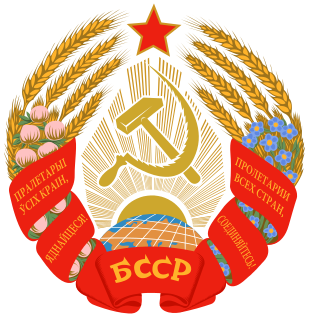 W
WSoviet repression in Belarus refers to cases of persecution of people in Belarus under Communist rule. This includes persecution of people for alleged counter-revolutionary activity, as well as deportation of people to other regions of the USSR based on their social, ethnic, religious or other background.
 W
WThe Uroczysko Baran killing fields, often referred to in Poland as the "Little Katyn" or the "Second Katyn", was the location for secret executions of soldiers and officers of the Polish Underground State carried out by Communist forces on behalf of the NKVD, SMERSH, PUBP, and Second Army of Ludowe Wojsko Polskie in the later stages of World War II.
 W
WThe Vinnytsia massacre was a mass execution of between 9,000 and 11,000 people in the Ukrainian town of Vinnytsia by the Soviet secret police NKVD during the Great Purge or Yezhovshchina in 1937–1938. Mass graves in Vinnytsia were discovered during Nazi Germany's occupation of Ukraine in 1943. The investigation of the site first conducted by the international Katyn Commission coincided with the discovery of a similar mass murder site of Polish prisoners of war in Katyn. Nazi Germany utilized this evidence of Communist terror to discredit the Soviet Union internationally, it became one of the more renowned sites of the politically motivated NKVD massacres among many in Ukraine.
 W
WWilliam Weisband, Sr. was a Ukrainian-American cryptanalyst and NKVD agent, best known for his role in revealing U.S. decryptions of Soviet diplomatic and intelligence codes to Soviet intelligence.